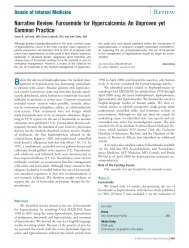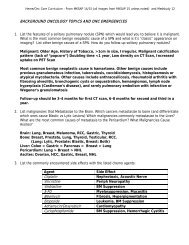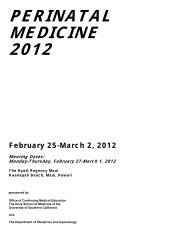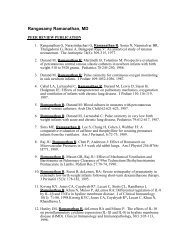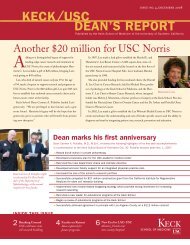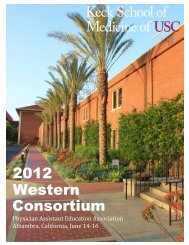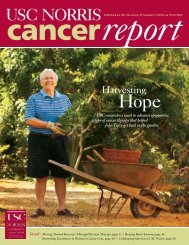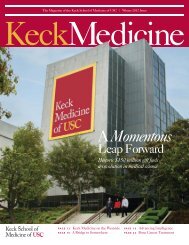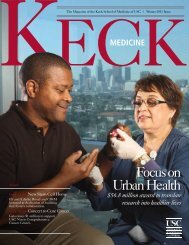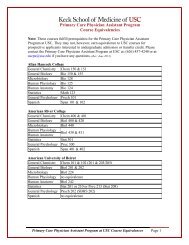Program Book - Keck School of Medicine of USC - University of ...
Program Book - Keck School of Medicine of USC - University of ...
Program Book - Keck School of Medicine of USC - University of ...
- No tags were found...
You also want an ePaper? Increase the reach of your titles
YUMPU automatically turns print PDFs into web optimized ePapers that Google loves.
hemodialysis. In North America the life expectancy <strong>of</strong> the individual reaching 80 yearsold is another 7 years <strong>of</strong> life (a personally depressing statistic), but for the end stagerenal patient this drops to less than 18 months. Given this limited life expectancy andweighing up other risk factors, many elderly patients are best served with a simpletunneled catheter.A last consideration is the use <strong>of</strong> a lower extremity AV graft positioned from a superficialfemoral artery to the saphenous vein in female patients who have very small upperextremity arteries and veins. Although patency rates are good for this access, infectionrates are higher because <strong>of</strong> the proximity to contaminated areas. It should be avoided inincontinent patients.The general concepts <strong>of</strong> autogenous AVF before graft, distal vessels first, upper ratherthan lower extremity, and avoidance <strong>of</strong> percutaneous catheters are all sound, but ineach instance exceptions to the guidelines may better meet the patient’s needs.References1. KDOQI ( 2006) Vascular Access Guidelines AM J Kidney Disease(2006;48:S177-322)2. Society for Vascular Surgery Practice Guidelines J Vas Surg (2008;48:S1-80)3. Wilson, SE. Vascular Access: Principles and Practice. 5 th edition. Lippincott,Williams and Wilkins 200965



